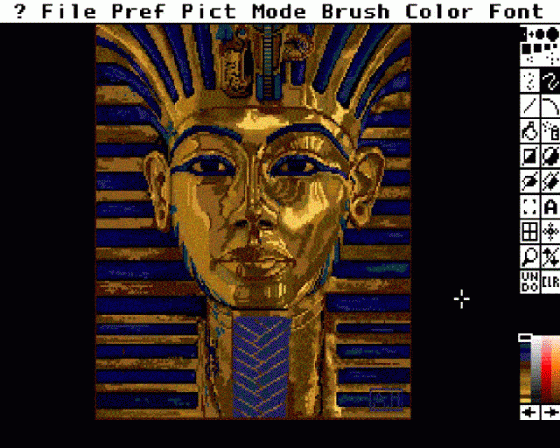
Micro Mart
 13th November 2008
13th November 2008
Categories: Review: Software
Author: Sven Harvey
Publisher: Electronic Arts
Machine: Amiga 500
Published in Micro Mart #1030
Sven Harvey looks at a design masterpiece that was once an industry standard, especially for game developers
Amiga Mart: Deluxe Paint II

After working for Lucasfilm and Xerox (where he created the monochrome pixel painter Doodle for the Xerox Dandelion, with programming partner Bill Bowman), Dan Silva started work with the fledgling Electronic Arts in 1983. After the work on Doodle and other projects, Dan set about proving that paint programs could be developed which were intuitive, and generally behaved as the user may expect. The result was the internal development tool, Prism.
When, in 1985, founder Trip Hawkins became very interested in the work of the small Amiga Company - and later when Commodore purchased it - Electronic Arts was very quick to support the fledgling machine, even providing early Amiga 1000 buyers with an Electronic Arts Kaleidoscope disc (which, as well as being an electronic kaleidoscope, also came with a preview of upcoming EA releases). What's more, behind the scenes, Dan Silva had been given access to the Amiga platform as early as Commodore could afford to give away secrets, and Prism was hastily rewritten to take advantage of the huge graphical power of the new machine. Bearing in mind that Macs were, and would remain, monochrome for some time, and PCs were struggling with CGA graphics (well, if you wanted to spend double the cost of the Commodore machine anyway) the software was years ahead of its time, just like its host machine.
Apple was scared of the Amiga as it was. After seeing the product running at CES that year, and looking forward to the release of Deluxe Paint from the company founded by its own former Director of Marketing and Strategy made it wonder quite how Commodore could fail. It need not have worried, as Commodore's own marketing once again let it down.
Ironically, while Dan Silvas' product would be met with universal acclaim from everyone, the designer himself was disappointed that deadlines had led to DP shipping bereft of many intended features. Thus, Deluxe Paint II was already well on the way by the time the original hit the shelves. Others were more enthusiastic; Deluxe Paint was easy to use, and its direct control of the palette combined with the Amiga's ability to manipulate colours, made the program the industry standard in the mid 1980's, and made it the pixel painter of choice for many years following the death of Commodore.
The first Deluxe Paint managed a stunning market penetration, with over 50% of Amiga owners grabbing a copy of the package. Here in the UK, following the release of Deluxe Paint II, the refined and as-it-should-have-been version was soon bundled with the A500, most famously as part of the A500 Batman Pack. Suffice to say 100% of new UK Amiga owners had Deluxe Paint of one version or another as part of their software collection, and it was well used by most.
Next week, we'll look at the impact of Deluxe Paint, and Deluxe Paint III with animation.
Other Reviews Of Deluxe Paint II For The Amiga 500
Deluxe Paint II (Electronic Arts)
A review
Deluxe Paint (Electronic Arts)
A review


